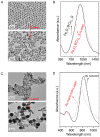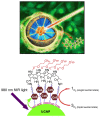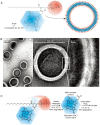Advances in nanomaterials for use in photothermal and photodynamic therapeutics (Review)
- PMID: 31115497
- PMCID: PMC6579972
- DOI: 10.3892/mmr.2019.10218
Advances in nanomaterials for use in photothermal and photodynamic therapeutics (Review)
Abstract
Nanomaterials play crucial roles in the diagnosis and treatment of diseases. Photothermal and photodynamic therapy, as two minimally invasive therapeutic methods, have promising potential in the diagnosis and prevention of cancer. Recently, many photothermal materials (such as noble metal material, transition metal sulfur oxides, carbon material and upconversion nanomaterial) and photodynamic materials (such as phthalein cyanogen, porphyrins and other dye molecules) have been applied in photothermal therapy (PTT) and photodynamic therapy (PDT). Moreover, as nanomaterials have suitable biocompatibility, these materials have been applied in cancer therapy. In the present review, we summarized the effects of different material types, synthesis methods, material morphologies and surface modifications on the outcomes of cancer therapy. The application of nanomaterials in PTT and PDT was introduced and the advantages and disadvantages of PTT and PDT in the prevention of cancer were discussed. Finally, we discussed the application of nanomaterials in the combination of PTT and PDT in cancer treatment.
Figures










References
-
- Oh J, Yoon H, Park JH. Nanoparticle platforms for combined photothermal and photodynamic therapy. Biomed Eng Lett. 2013;3:67–73. doi: 10.1007/s13534-013-0097-8. - DOI
-
- Shibu ES, Hamada M, Murase N, Biju V. Nanomaterials formulations for photothermal and photodynamic therapy of cancer. J Photochem Photobiol C: Photochem Rev. 2013;15:53–72. doi: 10.1016/j.jphotochemrev.2012.09.004. - DOI

